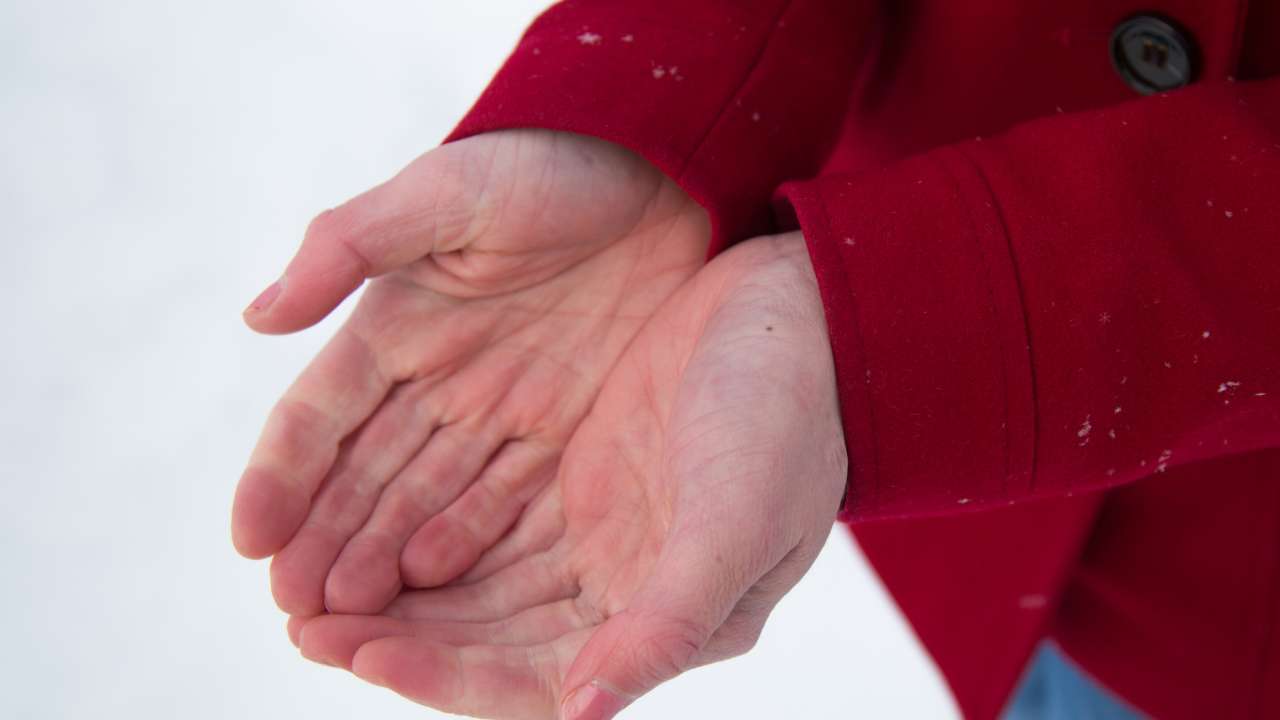Most people don’t like feeling cold. But when you have Raynaud’s disease, cold is about more than discomfort — it can be downright painful. The condition (also called Raynaud’s syndrome or Raynaud’s phenomenon) impacts blood circulation, and chilly temperatures aren’t the only trigger.
If you’re one of the 10% of people living with Raynaud’s disease in the United States, here’s what you need to know about managing this condition:
What is Raynaud’s disease?
Raynaud’s is a condition in which cold temperatures or stress brings on poor blood circulation. Your body overreacts by constricting your blood vessels and cutting off circulation to some body parts. It typically affects fingers and toes, but in rare cases, it can impact blood flow to your ears, nose, lips or nipples.
During a Raynaud’s episode, your fingers and toes tend to go through three stages:
- Turning white and numb as blood flow lessens
- Turning blue as oxygen in those body parts is depleted
- Turning red and painful when blood flow returns
The most uncomfortable phase of Raynaud’s typically happens when circulation resumes. Pain, throbbing and a feeling of pins and needles often accompany the redness. An attack can last a couple of minutes or a few hours.
Why does Raynaud’s happen?
There are two types of Raynaud’s disease — primary and secondary. Primary Raynaud’s disease is the most common, but doctors don’t know what causes it. People assigned female at birth (AFAB) are nine times more likely to have Raynaud’s, which often runs in families.
Secondary Raynaud’s syndrome is less common and associated with an underlying condition — typically an autoimmune disease that damages blood vessels. Common conditions associated with Raynaud’s include:
Tips for managing Raynaud’s symptoms
There is no cure for Raynaud’s disease. But taking specific steps and following your physician’s guidance can reduce the episodes you experience.
If you are living with Raynaud’s syndrome, you should:
1. Keep your body warm.
Exposure to cold is a surefire way to ignite an episode of Raynaud’s. But it’s not just about keeping your fingers and toes warm — Raynaud’s attacks occur when your body’s core is cold, too. Even people living in hot climates can experience Raynaud’s flare-ups if they enter an air-conditioned space. Keep your home warm and dress in layers whenever possible.
Cover your fingers outside in colder temperatures and consider heated mittens or socks. If your fingers feel cold, wiggle them, swing your arms in circles (like a windmill) to improve circulation or run them under warm water.
2. Limit stress and anxiety.
Your body releases the stress hormone adrenaline when it senses danger. As a result, your heartbeat quickens, and your blood vessels narrow. In people with Raynaud’s, this stress response can trigger a flare-up.
Learning how to manage your stress and anxiety can help limit episodes. Practice breathing exercises, yoga or meditation. These exercises will also help you stay calm when a flare-up occurs.
3. Exercise regularly.
Exercise offers a double benefit for people living with Raynaud’s. It improves blood flow and circulation. It also helps you manage mental health and stress, which can lead to flare-ups.
Exercising in a warm environment is generally the best option if you have Raynaud’s. If you live in a cold climate and choose to workout outdoors, dress appropriately and cover your hands. Swinging your arms as you walk or run can help with circulation to your hands.
4. Stop smoking.
Nicotine constricts the blood vessels in the skin, resulting in reduced blood flow and temperature for your fingertips and toes. But the effects of nicotine aren’t always temporary. Over time, smoking can permanently damage blood vessels. Quitting smoking improves circulation and lays the foundation for healthier blood vessels.
5. Limit caffeine.
Like nicotine, caffeine can cause blood vessels to narrow and trigger a Raynaud’s flare-up. Even if you aren’t a big coffee drinker, you may get more caffeine than you realize. Hidden sources of caffeine can include:
- Chewing gum
- Chocolate and chocolate-flavored foods
- Decaffeinated coffee and tea
- Energy drinks
- Medications, including some over-the-counter pain relievers
6. Partner with your primary care physician (PCP).
Only 10% of people with Raynaud’s seek treatment. But working with your PCP can be essential to controlling flare-ups. Your physician can identify secondary Raynaud’s and treat the underlying condition.
Your PCP can also assess your medications and prescribe drugs that may help. Some medications — including some decongestants, migraine medications and beta blockers (used for high blood pressure) — may make Raynaud’s disease worse. Other blood pressure medications can help blood vessels stay open and reduce the frequency of your episodes.



